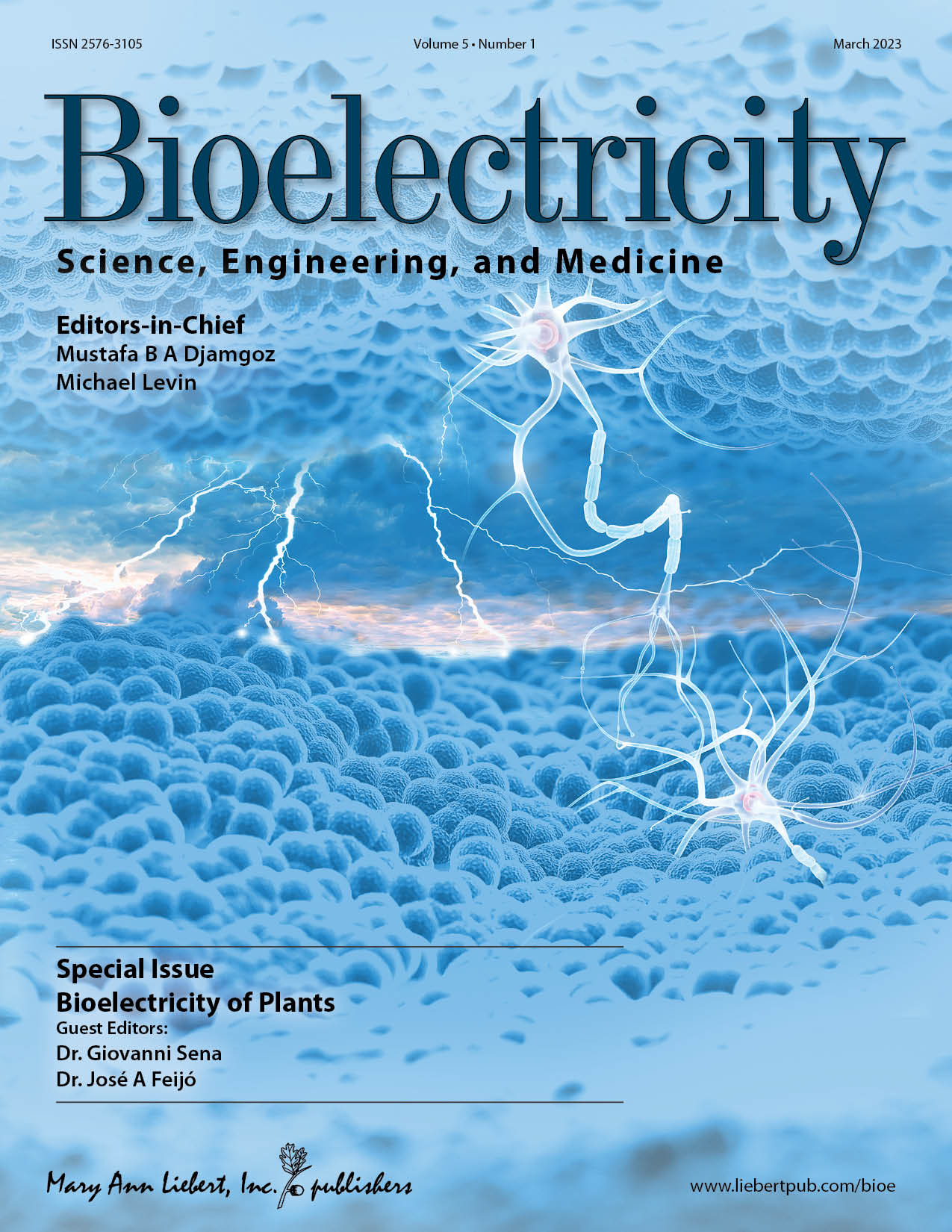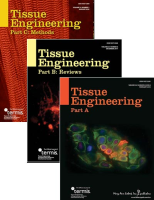Announcements
-
Now Indexed: PubMed Central, Web of Science Emerging Sources Citation Index (ESCI), Scopus, Biological Abstracts, BIOSIS Previews, and BenchSci
-
Secure your access for 2023: Ask your library to subscribe
Stay informed: Sign up for email alerts
Aims & Scope
All living things, animals and plants, even single-cell organisms, depend on their intrinsic electrical properties to function and to survive. The field of bioelectricity was borne from work on so-called ‘excitable cells’ (nerves and muscles) and it is now accepted that every biological cell has electrical properties which are essential for their normal functioning and homeostatic balance. Consequently, abnormalities in cellular bioelectricity are disruptive and can lead to serious disease. Furthermore, living things respond to external electric fields and a huge range of applications can exploit the body’s electricity in medicine, biomedicine and in industry including those related to food and environment. Large magnitude external electric fields can be applied to manipulate proteins and/or membrane structures in living cells (e.g. membrane electroporation/electropermeabilization, electrotransfer or pulse electric fields). These fields may profoundly modify the cell physiology and can be utilized for multiple applications affecting microbial, animal and plant cells.
Bioelectricity is an exciting and dynamic focal point for the growing bioelectricity community and serves as the go-to resource driving the field forward. The journal publishes the highest quality research papers across the multiplicity of subject areas encompassed by bioelectricity through original research articles, reviews, perspectives, technical notes and several extra features. The latter include the Bioelectricity Buzz, which reports on recent activities in the field, and My Experiments in Bioelectricity. The latter are written by senior scientists by invitation and highlight some of their key conceptual experiments mixed with anecdotes (the kinds of stories, experiences and those 'eureka' moments that would not be known in the field generally).
We welcome original research papers on any aspect of bioelectricity in life sciences, biomedicine, biotechnology, and bioengineering, including original research in any organism - translational, clinical, and applied. Areas of interest include (but are not limited to) the following:
Bioelectric Mechanisms:
- Cellular signaling, electrophysiology
- Ion channels, exchangers, pumps, and macromolecular complexes
- Channelopathies (including cancer)
- Bioelectric fields
- Development
- Immunity
- Microbiology
- Plants
- Regeneration
- Senescence
Practical Applications:
- Bioengineering
- Bioelectronics
- Biosensors
- Medical, biomedical devices
- Electropharmaceuticals, electroceuticals
- Nanotechnology
- Regenerative medicine
- Synthetic biology
- Tissue engineering
- Transplantation
- Optogenetics
- Imaging
- Microbial fuel cells
- Simulation software and mathematical models
- Electroporation/electropermeabilization/electrotransfer in biology and medicine
- Electroporation/electropermeabilization/Pulsed Electric Fields in plants, food industry and environment-related industries
We appreciate that authors wish their papers to be evaluated as soon as possible. Bioelectricity has maintained an average time to first decision of three weeks, thanks to our reviewers and editors.
The journal is published quarterly, and every other issue is ‘special’ dedicated to a single theme. Please contact the editors with your ideas if you wish to guest-edit a special issue.
Bioelectricity is led by Co-Editors-in-Chief Mustafa B A Djamgoz, PhD and Michael Levin, PhD.
Indexing/Abstracting:
- PubMed Central
- Web of Science: Emerging Sources Citation Index™ (ESCI)
- Scopus
- Biological Abstracts
- BIOSIS Citation Index™
- BenchSci



